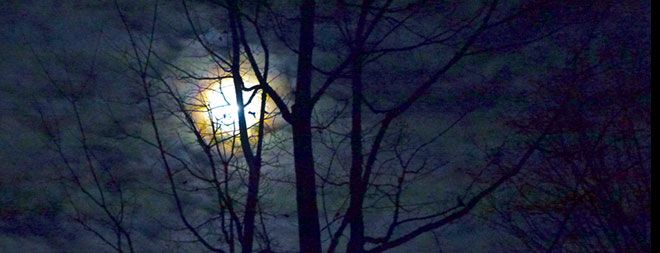Nocturnal Animals Take Chances On Moonlit Dinners

(ISNS) — Small nocturnal mammals surprisingly forage more on bright, moonlit nights when they can spot predators more easily, new research suggests.
Out in the wild, eating is risky business. Stepping out to grab a bite raises an animal’s chances of becoming another animal's meal. Nocturnal animals also calculate their eat-or-be-eaten chances by how bright the moon is. A full moon might make it easier for predators to spot them – or for them to spot lurking predators.
Ecologists have often assumed that on moonlit nights, large predators have an advantage over their tiny prey, according to Laura Prugh, an ecologist at the University of Alaska, Fairbanks, and author of the new study published last month in the Journal of Animal Ecology.
“I had it ingrained in me that these small animals face a greater predation risk with moonlight. It hadn’t occurred to me that moonlight could have opposite effects,” Prugh said.
Prugh and her co-author, ecologist Christopher Golden from the Harvard School of Public Health, found that many small species across the world that are commonly preyed upon were more active when the moon is full, and several predators were, by contrast, less active.
While studying endangered giant kangaroo rats in the Californian desert, Prugh and her colleagues found they had more luck trapping the animals on moonlit nights. When the trend remained consistent over a 5-year period, they decided to dig deeper.
The researchers extracted data from nearly 60 previously published studies on the effects of moonlight on animal behavior. The existing data spanned a wide variety of species and habitats – from bush babies to spear-nosed bats, and from African savannahs to coniferous forests in Canada.
Sign up for the Live Science daily newsletter now
Get the world’s most fascinating discoveries delivered straight to your inbox.
Prey animals that primarily used their vision to find food or spot danger were more active on well-lit nights, they found. Those that used other senses – smell or sound, for example – were less active.
Where animals lived made a difference too. Tiny foragers were more likely to be active in covered habitats like forests, and less likely to venture out by moonlight in open spaces like deserts or grasslands. Large predators behaved in similar ways, hunting less often in open habitats on bright nights.
“This paper has provided the most comprehensive assessment of the role of moonlight across a breadth of species,” said Douglas Kelt, a wildlife ecologist at the University of California, Davis, who was not involved with the study.
Why predators hunt less on bright nights, particularly in open spaces, is still a gray area. Few researchers so far have studied both predators and prey simultaneously to see how the behavior of the hunted might affect the hunters.
Since small animals are less active in open habitats on bright nights, predators may lie low since there are fewer meals afoot, said Prugh. Or, moonlight may dull their chances of hunting success. If they prefer to stay camouflaged in dark corners and sneak up on their prey, moonlight may blow their cover.
“It’s still an open question whether predators in grasslands and deserts are less active because their hunting success goes down, or because their prey is less active,” she said.
Kelt suggests an alternative: Most predators are also prey to bigger predators. In deserts and grasslands, smaller hunters may lie low for the same reason foragers do – to avoid being hunted.
“Top predators like tigers are much less concerned about being eaten than grasshopper mice probably are – animal behavior was more dependent on their risk of being hunted than on what food they were trying to find,” he explained.
Targeted field studies that analyze animal interactions by moonlight might shed some light on the possibilities, Prugh thinks.
“It’s more complicated than simply assuming that moonlight makes dining dangerous for small nocturnal animals,” she concludes.
Inside Science News Service. Jyoti Madhusoodanan is a science writer based in San Jose, Calif. She tweets at @smjyoti.












